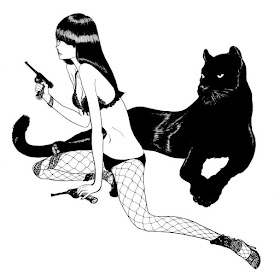The semi-regular collection of art that has inspired me lately
Becky Munich
Gustave Dore
Eldo Yoshimizu
Joy Ang (work in progress)
Artist unknown (but the image is the Beast of Gévaudan)
Tom Scioli (from American Barbarian)
Kentaro Miura (from Berserk)
Tom Scioli again because this is the most bonkers comics sequence I've seen in a while
Claudia Cangini
Alexis Flowers (from I Roved Out)
Nicholas Virviescas
Art from the forthcoming 3rd edition of Malifaux
(wish they were better at crediting their artists)
Calum Alexander Watt
Ellen Rogers
Sam Hogg
Ignasi Monreal
Andrea Sorrentino (from Gideon Falls)
John Stokes (from a Star Wars comic)
Damien Worm (from The October Faction)

























































